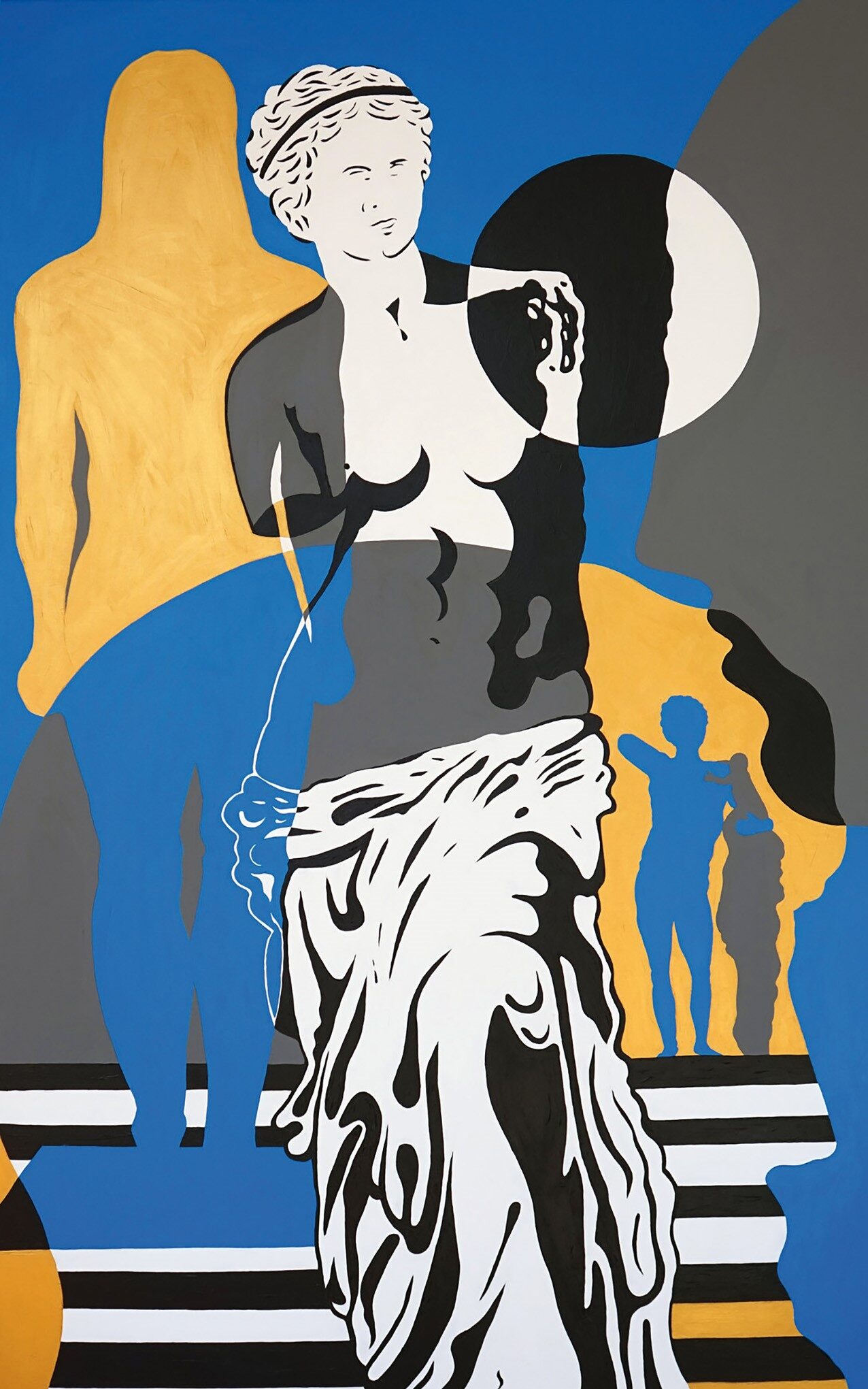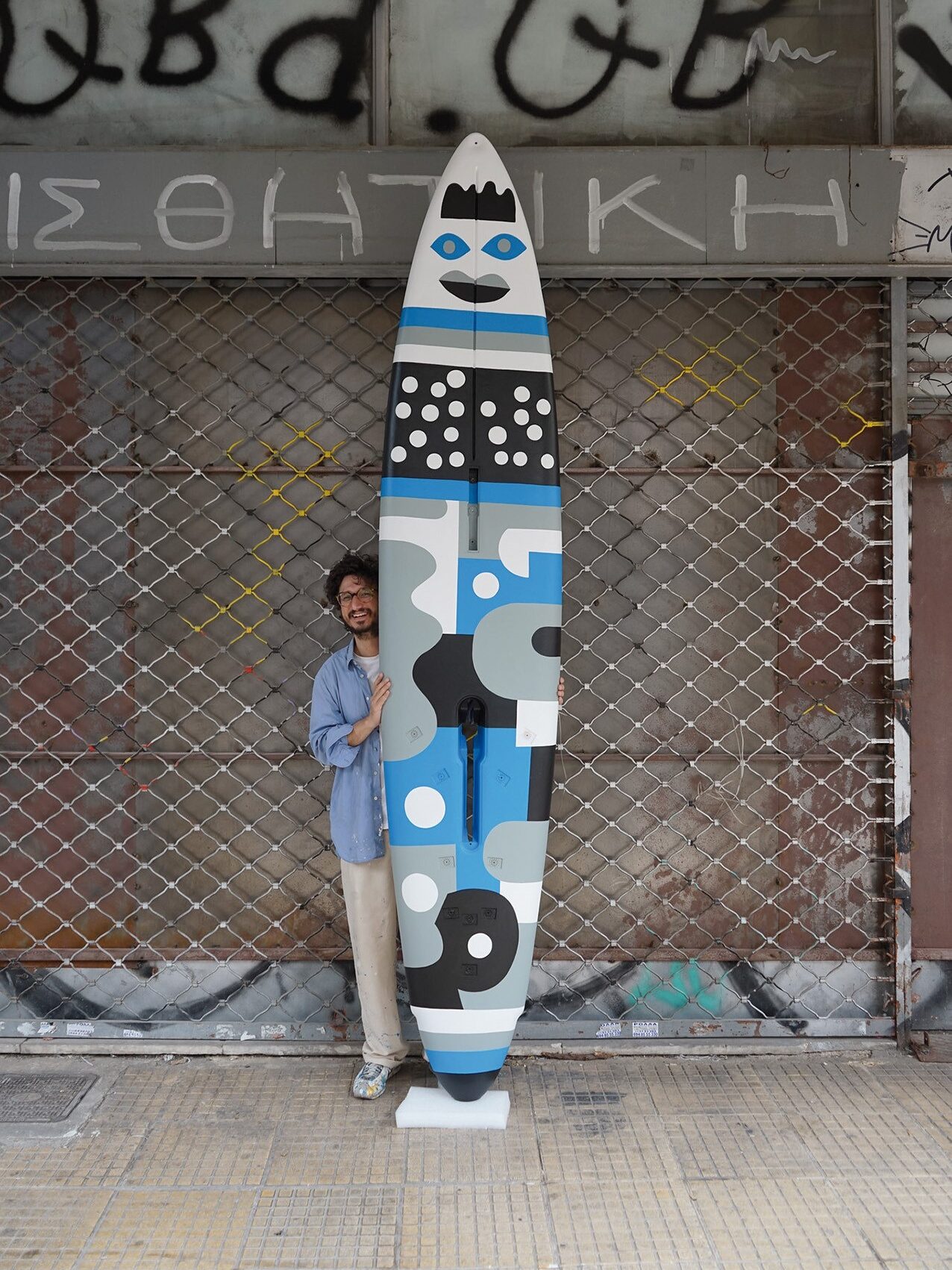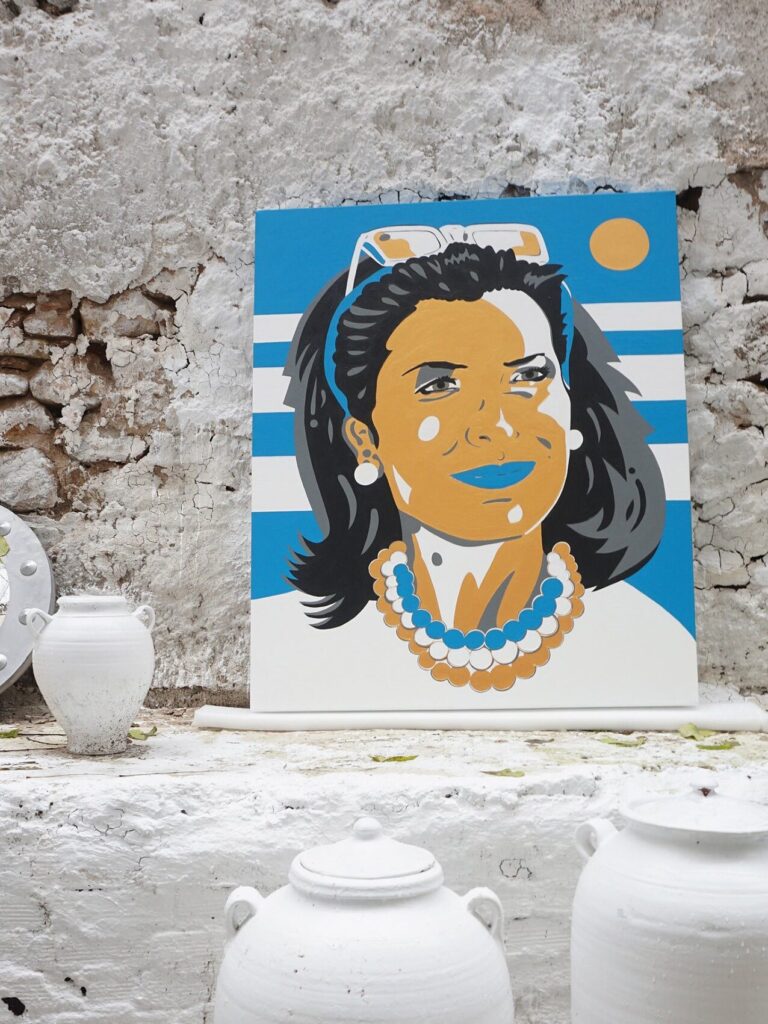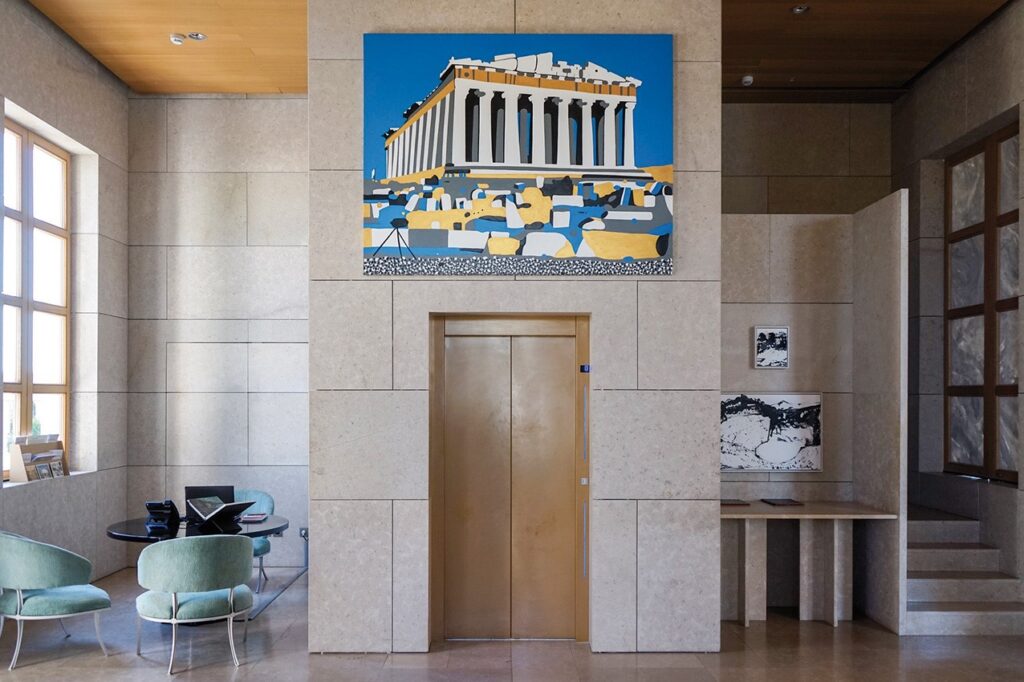Yassonas Megoulas, (Cacao Rocks) is an artist intertwined with the city, who traverses all art forms across the globe.
The son of renowned sculptor Georgios Megoulas, Yassonas Megoulas was born in Athens in 1985. Initially involved in street art, he studied French Literature in Greece and France. He has exhibited his works in galleries around the world as well as at foundations and museums such as the Benaki, Οnassis Cultural Center Athens, Michael Cacoyannis Foundation and the Bouzianis Museum, drawing attention for his paintings, sculptures, video art, installations and performances from the New York Times, National Geographic, the Guardian, ARTE and the BBC. As an educator, he has lectured at universities as organized employee workshops at WeTransfer.
Although you also have French citizenship, you have chosen Greece as your base to work from. What do you believe are the advantages of working and creating in Greece?
I was born and raised in Greece, specifically in Piraeus and Corfu. I have two nationalities, French and Greek as my mother is French and my father is Greek. While being active in any freelance profession in Greece is a challenge, there is a certain chaos and freedom that spurs my creativity. I love Athens! What other European capital gives you almost everything that Western civilization has to offer whilst at the same time being deeply rooted in the charms of the East? Every time I leave Greece, I miss the sea and as benign as it may sound, the light of the Aegean. Paris inspires me, but one week there charges my batteries enough for the entire year. Over the course of the last decade Athens has become a center of contemporary art with collectors from all over the world now showing an interest in the city and the art created here. We still have a long way to go to become an art epicenter like New York, Miami or Basel, but we have undeniably started along the path to becoming an arts destination.


Which city do you admire for the way in which it showcases contemporary art?
I work quite a lot in Vienna as I have a solid relationship with the AG18 Gallery there. Vienna is like Paris, but cleaner and more organized – perhaps even more humane and easier to live in – because of its smaller size. Its winter, although cold, is sweeter than that of Berlin. The museums are all located close to one another, and there are so many galleries that are very professional in what they do. It’s also an “inspirational” city that supports young artists. Vienna’s architecture, with its neoclassical style, is quite reminiscent of Greece – there’s even a golden statue of Athena outside Vienna’s parliament building. Last September while I was there, I visited Mumok, the city’s contemporary art museum where two floors of the museum were dedicated to a young artist who uses spray paints which made a great impression on me. For me, Vienna is a model city in how it promotes contemporary art, and culture in general.
Having been involved in street art in the past, to what extent do you believe that an artist can intervene in the everyday life of people who live in the city? Should such art be viewed as part of an urban environment or do you prefer such works to function as “disruptors” within the city’s fabric?
For several years I only did street art, without this being a profession – it didn’t even exist then a profession. It was just a way of being and I didn’t think of it as vandalism. I used to think that the city itself was a vandalism of nature, so why should I respect its walls? Later on, I began to change my mentality and think more about those around me and began to respect the labor of the craftsmen who had not only built the city but those who are also involved in maintaining it. Some major public works are understandably a nuisance. Street art is spreading at a very fast pace and not everyone has had time to accept it. Some works touch on social issues and are a form of protest which is definitely more peaceful than other forms of protest. But I do understand that graffiti can still be annoying. With that being said, it is a democratic art form whose main goal is communication. A city without street art would otherwise be boring. When I was involved with street art, I did it without asking anyone for permission and risked being arrested many times. Now, I’ve stopped doing it. I have a voice to say what I want and I think it’s best to leave the walls to younger people to say what they want. Besides, I’m fortunate that my work has been recognized and I can communicate everything I want to say through the work that I create, perhaps in a more poetic way.
EVERY TIME I LEAVE GREECE, I MISS THE SEA AND AS BENIGN AS IT MAY SOUND, THE LIGHT OF THE AEGEAN.
Cacao Rocks
What is Athens’ artistic identity? Has it evolved in recent years?
The biggest artistic movement in the last twenty years in Athens is street art. Dozens of internationally acclaimed artists are involved in it and none of them receive any help from art institutions. Apart from the major exhibition No Respect held at the Onassis “Stegi” and the Like New! exhibition at the Benaki Museum, not much else has really been done by the institutions or foundations to develop this movement. With that being said, the Municipality of Athens has made an effort in the last four years, thanks also to the passion and tireless work of Katerina Koskina. Overall, the National Museum of Contemporary Art Athens (EMST) is doing a good job and the Stavros Niarchos Foundation (SNF), through its ARTWORKS awards, has also given an important boost for young artists in Athens. I would say that after Documenta, there is a spotlight on us waiting for something new to be born.
Your father is Georgios Megoulas, an exceptional sculptor who has also been honored in France. What is your relationship with the medium that he worked with?
I grew up in my father’s workshop in Piraeus. It was frequently visited by poets, painters and all types of artists. Until I went to school I had the illusion that everyone was an artist and that this was how the whole world operated. I helped him a lot when I was a kid – actually with several of the works he created during the 90s. When I became a teenager, I stopped helping him and began to forge my own path. I started painting on walls and skateboards, I was quiet but unruly. More recently, I have been trying as much as I can to visit him in Corfu where his workshop is now located, in the village of Temploni. Last summer we organized a joint exhibition at the Corfu Art Gallery and showcased some of the works that we have created together. I haven’t devoted myself to sculpture as much as to painting. It’s hard work, it requires physical strength and it’s pretty dirty work. I can’t stand dust, I prefer paints. But I have definitely been influenced by my father’s sculptures as well as his paintings, which he did when he was young, works that he created in the 70s in Paris which have never been exhibited in Greece. They had a great influence on my style and maybe in the future we will show them somewhere together.


What creative mediums are you currently focusing on and working with?
In recent years I have focused on painting, drawing inspiration for the themes of my works from photographs that my grandfather took. My grandfather was René Boisseau, the director of the Pasteur Institute in Athens between 1936 and 1946 during the difficult years of the occupation in Greece. He fought for vaccinations against diphtheria and contributed to the complete eradication of diphtheria in Greece. During World War II, the institute prepared large quantities of tetanus and antityphoid vaccines for the needs of the Greek army. In 1940 he participated in the committee which examined the applications for scholarships offered by the French state to Greek citizens to study in France, in other words Octave Merlier’s famous ‘Mataroa’ initiative. At the same time, however, he had a passion for photography. I was lucky enough to discover his film negatives and I am slowly displaying them and trying to render them with large sized paintings. At the same time, I am working on a number of large murals and works on demand. Also, my dream is to travel to Africa to do murals there, I hope to make it there soon.

Is there a certain piece of work that you father created that you especially admire? Where in the city would you be able to see it up close?
My father has created many works that are displayed in public spaces, mainly monuments. He is one of the pioneers of constructivism and combined it with realistic elements to create monumental sculptures. He has created works that are on display in squares almost all over the country. Apart from the National Glyptotheque however, none of his works are on display in the center of Athens in a public space. In 1987, he created a large sculpture that had movement and created sounds. It was installed in Santarosa Square and was quite innovative for its time. Kostas Varotsos’ famous Dromeas (The Runner) which was erected at around the same time proved to be much more popular than my father’s sculpture which was probably stolen for its metal a few days after it was installed. There is also a youtube video called Metallica by director Takis Bardakos that documents the creation of this sculpture. At some point I also appear with a pacifier in my mouth wandering next to the sculpture. It would be wonderful if this sculpture still existed somewhere in the city.





